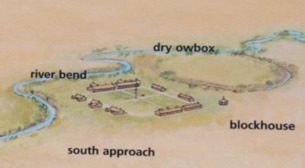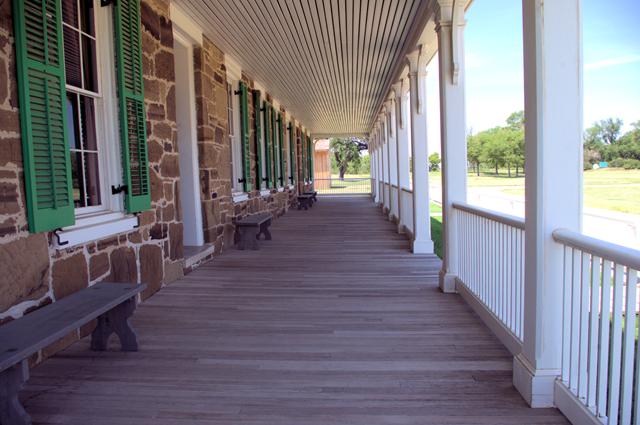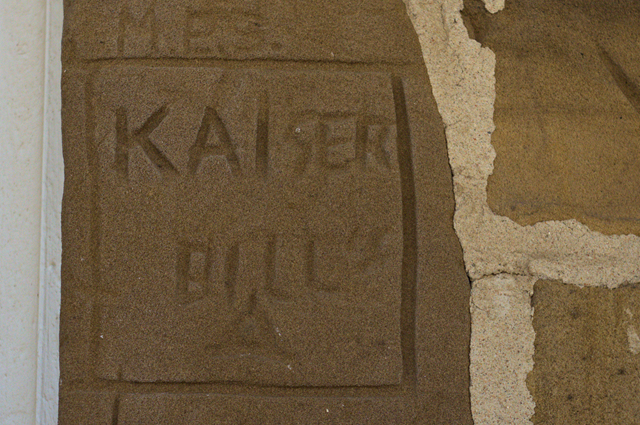We visited Fort Larned on August 4th.
Fort Larned, Kansas is typical of an 1860s Great Plains Army post. It doesn’t have the stereotypical wall of sharpened upright logs so often seen in the movies.  Most forts established on the Great Plains never had a wall of any sort. Direct attacks by plains Indians were rare, surprise attacks on smaller groups of soldiers being the preferred tactic. In the 1860s, this part of Kansas was vast treeless plains, making construction of any sort of log wall very difficult. Trees in this region were so rare that, for many years, fence posts were cut from limestone.
Most forts established on the Great Plains never had a wall of any sort. Direct attacks by plains Indians were rare, surprise attacks on smaller groups of soldiers being the preferred tactic. In the 1860s, this part of Kansas was vast treeless plains, making construction of any sort of log wall very difficult. Trees in this region were so rare that, for many years, fence posts were cut from limestone.

Situated about 50 miles northeast of modern day Dodge City, Kansas, Fart Larned was 20 days travel along the Santa Fe Trail from the Missouri River steamboat landings at Independence, Missouri. For 60 years, the Santa Fe Trail was one of the most important trade routes in the world. Freight wagons could make the 781 trip – one way – in eight weeks, with luck, facing semi-arid prairies storms, flooded rivers, wildfires, dust, plagues of gnats and mosquitoes, mud, Comanche, Kiowa, Cheyenne, Arapahoe, and Apache.

Most of the Army posts of the Great Plains are long gone, building materials often scavenged or sold after the post were closed. Fort Larned was purchased for a local ranch, it’s buildings put to varied uses over the years. The ranch family lived in the commanding officer’s home, shown below.

According to the park ranger that we talked to, the family that owned the property welcomed visits by the local public. Families would picnic on the parade ground. Kids would even ride their bikes out from the nearest town. Many left inscriptions in the sandstone walls of the fort’s buildings. While most were names or initials, many with dates, a few others had historical significance.

How many today would understand who “Kaiser Bill” was?

